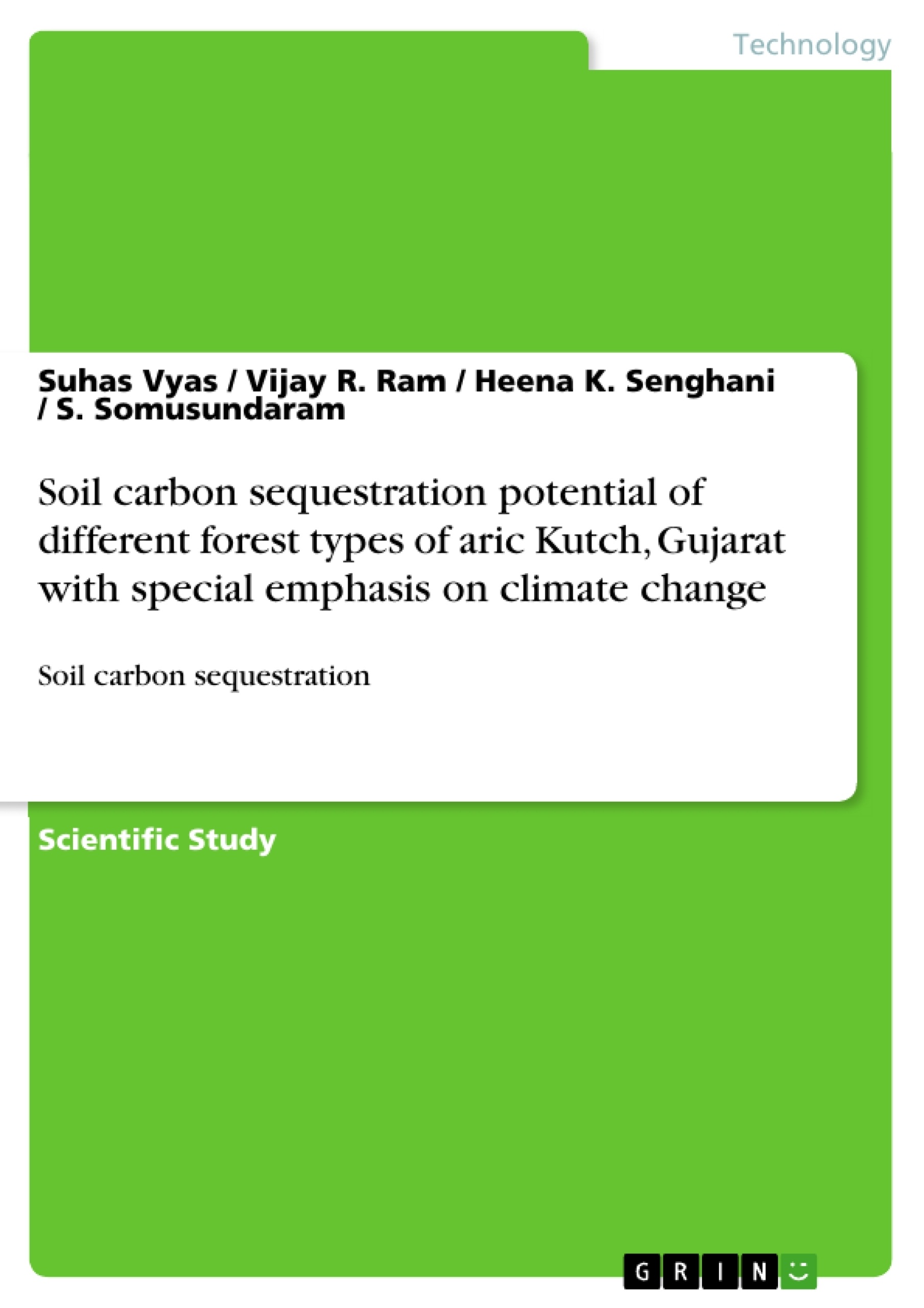The Gujarat state encompasses an arid area of 62,180 Km2 of which 73% is falling under kachchh district. Kachchh is the one of the largest district in India covering an area of 45, 612 sq.km. And is part of the Kathiawar Peninsula occupying the northwestern part of Gujarat. The major objective of the present study was to analyze the physico-chemical characteristics of soil, to estimate the soil carbon pool as well to conserve the soil organic carbon pool. Major plant species which were noted at the Tapkeshwari hill in the were Salvadora persica, Capparis decidua, Capparis deciduas, Calotropis procera, Tamarix sp., Aeluropus lagopoides, Cressa cretica, Sporobolus spp. and Prosopis cineraria, Acacia nilotica and Acacia Senegal. Different parameters were analyzed for soil samples like alkalinity, total hardness, calcium and magnesium hardness, sulphure, iron, phosphorous, total organic carbon, chloride, sodium, potassium, EC, pH, TDS, and moisture content. The soil sample near P. chilensis species gives higher values in monsoon season in moisture content, pH, phosphate, TOC, SAR, iron, potassium, sodium and chloride, whereas temperature, alkalinity, Total hardness, calcium, magnesium and sulphate gives higher value in winter season. Soil samples of Acacia Senegal gives higher value of TOC in winter season. Prosopis julif- lora shows negligible value in winter season. The value of TOC in decreasing order in all species was Acacia senegal ~ Prosopis cineraria ~ Salvadora persica ~ Acacia nilotica ~ Prosaopis cineraria.
Inhaltsverzeichnis (Table of Contents)
- Introduction
- Objectives
- About Kachchh
- Climate of Kutch
- Flora and Fauna
- Types of analyses are done on soil sample in the laboratory
- Review of literature
- Methods and Materials
- Results
- Discussion
- Summary & Conclusion
- References
Zielsetzung und Themenschwerpunkte (Objectives and Key Themes)
This work aims to investigate the physico-chemical characteristics of soil in the Kachchh region, estimate the soil carbon pool, and explore methods to conserve soil organic carbon to mitigate climate change. The study also focuses on selecting appropriate plant species for plantation in the region.
- Soil characteristics and carbon pool in the Kachchh region
- Strategies for conserving soil organic carbon
- Climate change mitigation through soil carbon management
- Plant selection for successful plantation in Kachchh
- Sustainable development models for the Kachchh Biosphere Reserve
Zusammenfassung der Kapitel (Chapter Summaries)
The introductory chapter delves into the objectives of the study, provides background information on the Kachchh region, its climate, flora, and fauna, and outlines the types of soil analyses conducted. The 'Review of literature' chapter will likely summarize existing research on soil characteristics, carbon sequestration, and plant selection in arid regions. 'Methods and Materials' will detail the research methodology, including sampling techniques, analytical methods, and data analysis. 'Results' will present the findings of the study on soil properties, carbon content, and other relevant parameters. Finally, 'Discussion' will analyze the results, draw conclusions, and propose implications for sustainable land management in Kachchh.
Schlüsselwörter (Keywords)
This study focuses on the following key terms and concepts: soil characteristics, soil carbon pool, climate change mitigation, plantation, plant selection, Kachchh region, arid ecosystems, sustainable development, biosphere reserve, and soil analysis.
- Quote paper
- Suhas Vyas (Author), Vijay R. Ram (Author), Heena K. Senghani (Author), S. Somusundaram (Author), 2014, Soil carbon sequestration potential of different forest types of aric Kutch, Gujarat with special emphasis on climate change, Munich, GRIN Verlag, https://www.grin.com/document/279681



